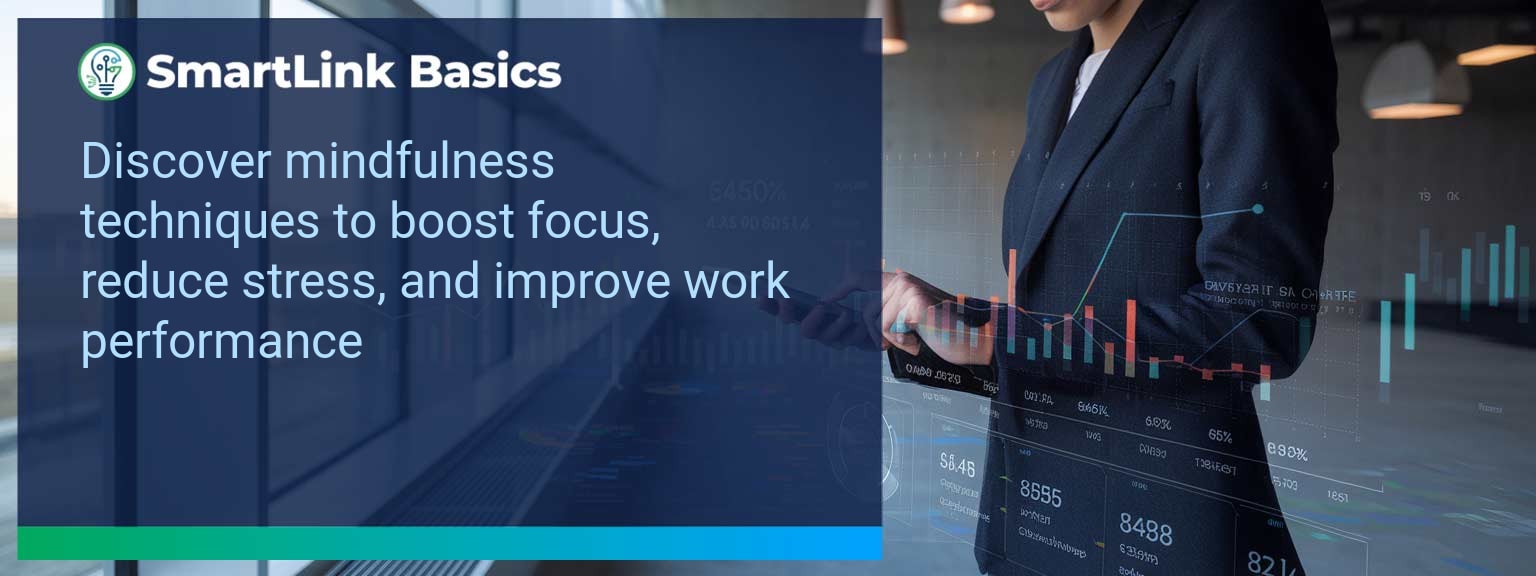A Stanford University study found that multitasking can decrease productivity by up to 40%, yet most sales leaders’ calendars are dominated by back-to-back meetings and rapid context switching. At SmartLink Basics, we see how this constant activity cycle erodes strategic thinking, decision quality, and execution discipline. This is where integrating mindfulness techniques for productivity becomes a tactical advantage, not a wellness luxury.
In this article, you’ll learn how to identify workplace distractions that directly impact revenue performance, apply focus-oriented mindfulness habits, and measure outcomes with clear metrics. We will also explore practical strategies that align with AI-driven sales enablement frameworks to help leaders sustain focus, improve concentration, reduce stress, and increase task efficiency across their teams.
- Identify high-frequency distractions and remove low-value meetings
- Introduce structured mindfulness breaks aligned with work cycles
- Leverage AI-assisted task management for mental clarity
- Use breathing and visualization techniques before key sales calls
- Measure both stress reduction and performance improvement through defined metrics
Common Distractions And Their Impact On Productivity
The constant arrival of notifications, unscheduled calls, and status meetings can fragment attention and drain mental bandwidth. For sales leaders, these distractions often lead to overlooked opportunities, inaccurate forecasting, and stalled deal cycles. When focus is lost, decision-making speed diminishes, creating a ripple effect across prospecting, negotiation, and pipeline progression. For example, one enterprise sales director we coached reduced Slack notifications by 70% and reclaimed nearly six hours per week of concentrated work time. A practical starting point is to conduct a one-week audit of all interruptions, categorizing each as high-value, low-value, or avoidable. Eliminating avoidable interruptions is the fastest way to improve cognitive performance.Implementing Everyday Mindfulness Habits For Focus
Mindfulness techniques for productivity work best when integrated into existing routines rather than added as extra tasks. Micro-meditations of 2–3 minutes between meetings can reset attention, reduce stress hormones, and prepare the brain for deep work. For example, one regional VP integrated a brief centering exercise at the start of each pipeline review. This increased participant engagement and reduced meeting overruns by 15%. Scheduling short breaks aligned with ultradian rhythms—natural alertness cycles of 90–120 minutes—improves sustained concentration. Leaders should model these behaviors, embedding mindful pauses into team cadences until they become a cultural norm.Positive Changes Observed In Workplace Performance
Teams adopting structured focus techniques report measurable gains in both output quality and speed. This includes sharper client pitches, better follow-up execution, and faster onboarding of new reps. Stress reduction also contributes to lower attrition rates, protecting institutional knowledge and revenue stability. A SaaS sales team that adopted mindful meeting transitions and daily reflection journaling saw a 12% quarter-over-quarter increase in quota attainment alongside a 30% drop in reported burnout symptoms. The key is to tie mindfulness success to tangible business outcomes, ensuring adoption is sustained beyond initial enthusiasm.Expanding Mindfulness Applications In Professional Settings
As AI tools automate administrative tasks, cognitive capacity can be redirected toward strategic selling and relationship building. Integrating mindfulness into AI-driven workflows strengthens leaders’ ability to interpret data objectively and act decisively. Future applications may include AI-enabled biofeedback during calls, real-time stress monitoring for sales managers, and team dashboards tracking collective focus health. This will drive an even stronger link between mental clarity and revenue performance. Sales leaders who cultivate these habits now will position their teams to outperform in increasingly complex markets, supported by both human discipline and AI efficiency.Metrics That Matter
| Category | Metric | Definition | Target |
|---|---|---|---|
| Leading | Mindfulness Session Adoption Rate | % of team participating in scheduled mindfulness breaks | 85%+ |
| Leading | Distraction-Free Work Blocks | Number of 90-minute focus periods completed per rep per week | 6+ |
| Lagging | Quota Attainment Rate | % of reps hitting quarterly revenue targets | 80%+ |
| Lagging | Deal Cycle Time | Average days from qualification to close | -15% from baseline |
| Quality | Rep Wellness Score | Composite of self-reported stress and energy levels | ≥ 4.0/5 |
| Quality | Engagement in Pipeline Meetings | Measured interaction levels and action item follow-through | +10% QoQ |
Get the 90-day plan, coaching rubric, and dashboard template to operationalize AI in your enablement program.









